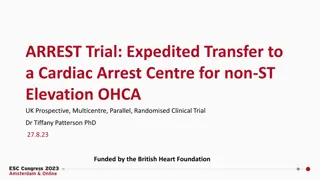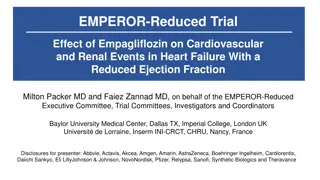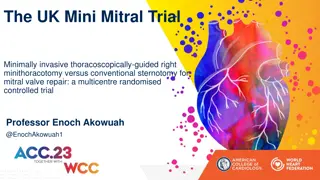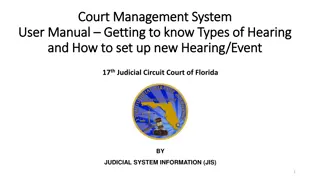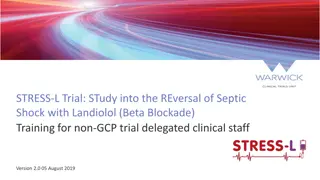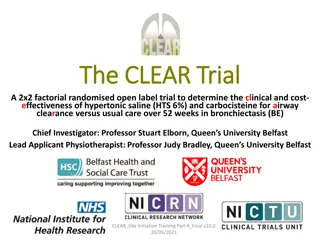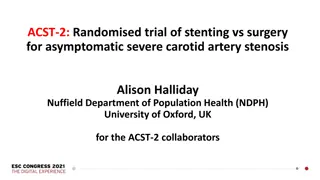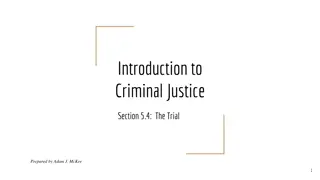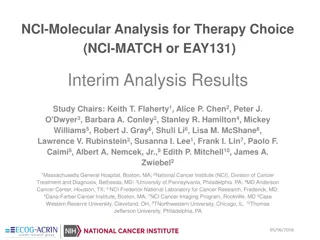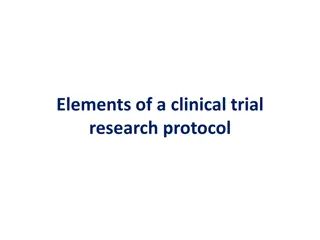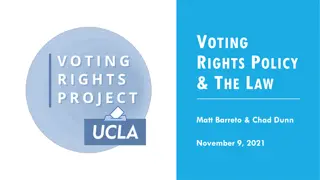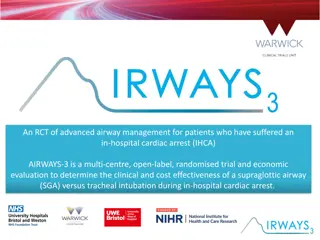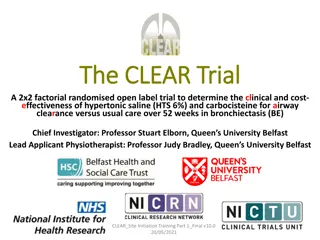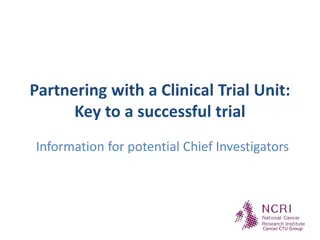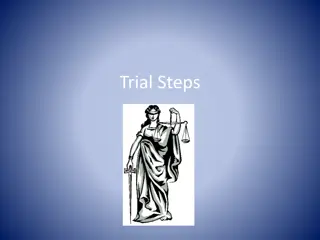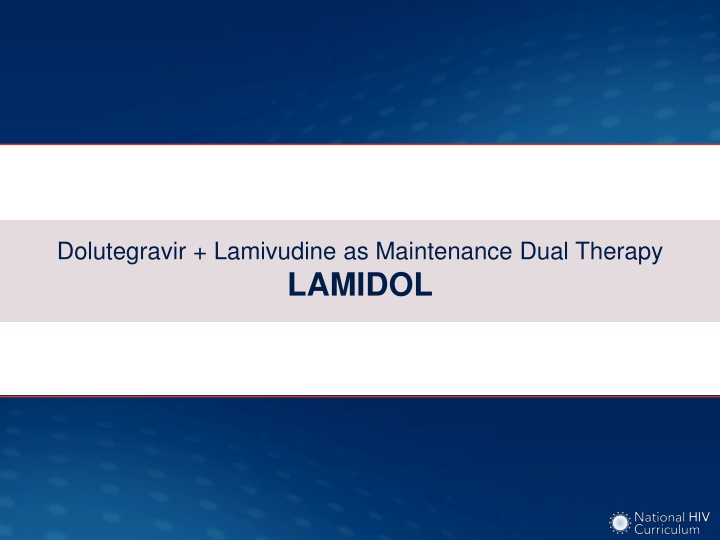
Dolutegravir Lamivudine Maintenance Dual Therapy Study
Learn about the LAMIDOL study evaluating the efficacy and tolerance of dolutegravir plus lamivudine as maintenance dual therapy for HIV-1-infected patients with controlled virological suppression. Explore the study design, baseline characteristics, 48-week virologic response results, and promising conclusion. Source: Joly V, et al. J Antimicrob Chemother 2019;74:739-45.
Download Presentation

Please find below an Image/Link to download the presentation.
The content on the website is provided AS IS for your information and personal use only. It may not be sold, licensed, or shared on other websites without obtaining consent from the author. If you encounter any issues during the download, it is possible that the publisher has removed the file from their server.
You are allowed to download the files provided on this website for personal or commercial use, subject to the condition that they are used lawfully. All files are the property of their respective owners.
The content on the website is provided AS IS for your information and personal use only. It may not be sold, licensed, or shared on other websites without obtaining consent from the author.
E N D
Presentation Transcript
Dolutegravir + Lamivudine as Maintenance Dual Therapy LAMIDOL
Dolutegravir plus Lamivudine as Maintenance Dual Therapy LAMIDOL: Design Study Design: LAMIDOL Background: Non-comparative, open-label, single-arm, multicenter trial to evaluate the efficacy and tolerance of once daily dolutegravir plus lamivudine as maintenance dual therapy Inclusion Criteria: - Age 18 years - Nadir CD4 count >200 cells/mm3 - HIV RNA <50 copies/mL for 2 years - Wild-type baseline genotype - First-line 3-drug ART: 2 NRTI s + NNRTI, boosted PI, or INSTI - Prior modifications for intolerance or simplification allowed - No HBV co-infection Regimen (Once daily) - Dolutegravir 50 mg + Lamivudine 300 mg *Phase 1 **Phase 2 8 weeks 40 weeks Dolutegravir + Lamivudine (n = 104) Dolutegravir + 2 NRTI s (n = 110) *Phase 1: third agent switched to dolutegravir **Phase 2: 2NRTIs switched to lamivudine Source: Joly V, et al. J Antimicrob Chemother. 2019;74:739-45.
Dolutegravir plus Lamivudine as Maintenance Dual Therapy LAMIDOL: Baseline Characteristics Dolutegravir-Lamivudine n = 104 Participants who Entered Phase 2 Age (median) 45 years Male 89 (85.6%) MSM 73 (70.2%) Duration since HIV diagnosis (median) 6.3 years Time on current ART (median) 4.0 years Nadir CD4 count (median) 399 cells/mm3 Current CD4 count (median) 743 cells/mm3 Baseline NNRTI 58 (55.8%) Baseline PI 24 (23.1%) Baseline INSTI 22 (21.2%) Source: Joly V, et al. J Antimicrob Chemother. 2019;74:739-45.
Dolutegravir plus Lamivudine as Maintenance Dual Therapy LAMIDOL: Results Week 48 Virologic Response (by FDA Snapshot Analysis) 100 97 HIV RNA <50 copies/mL (%) 80 60 40 20 101/104* 0 *Other 3 participants: - 1 with low-level viremia (resuppressed with 3-drug antiretroviral therapy), - 1 treatment modification decided by investigator, and - 1 lost to follow-up Source: Joly V, et al. J Antimicrob Chemother. 2019;74:739-45.
Dolutegravir plus Lamivudine as Maintenance Dual Therapy LAMIDOL: Conclusion Conclusion: Dolutegravir plus lamivudine is a promising maintenance therapy in HIV-1-infected patients with controlled virological suppression. Source: Joly V, et al. J Antimicrob Chemother. 2019;74:739-45.
Acknowledgment The National HIV Curriculum is an AIDS Education and Training Center (AETC) Program supported by the Health Resources and Services Administration (HRSA) of the U.S. Department of Health and Human Services (HHS) as part of an award totaling $800,000 with 0% financed with non-governmental sources. This project is led by the University of Washington s Infectious Diseases Education and Assessment (IDEA) Program. The content in this presentation are those of the author(s) and do not necessarily represent the official views of, nor an endorsement, by HRSA, HHS, or the U.S. Government.

